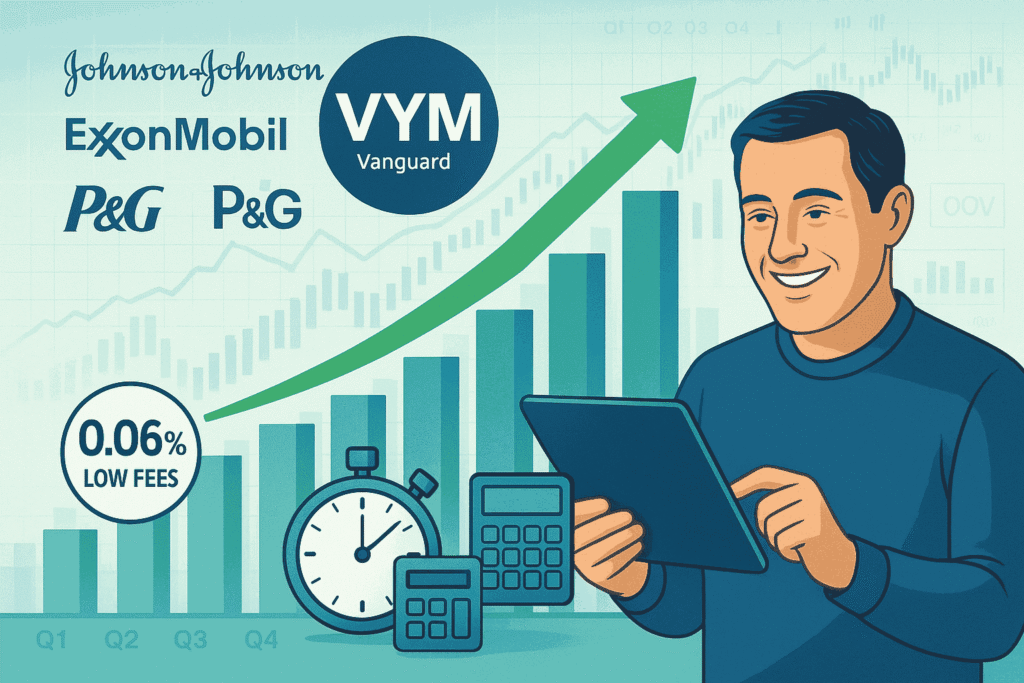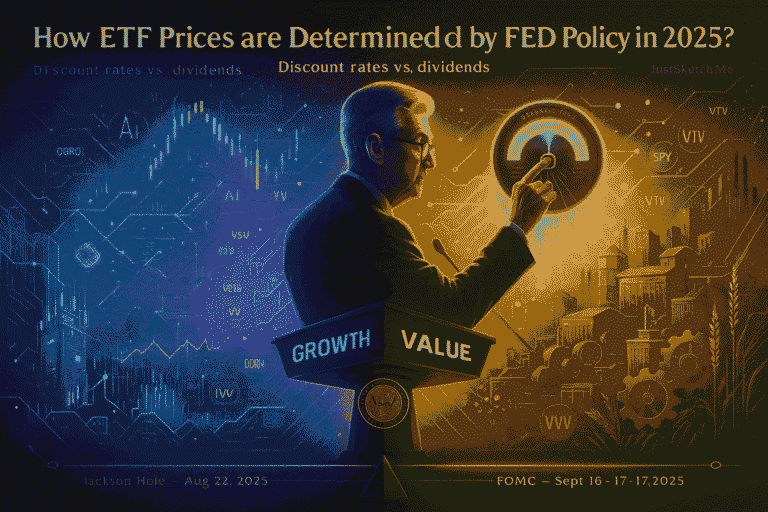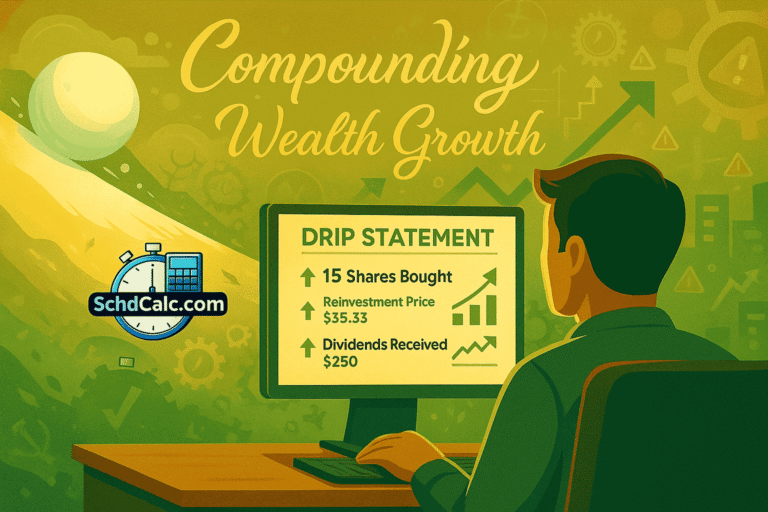The Vanguard High Dividend Yield ETF (VYM) invests in companies that are likely to pay high dividends. VYM has a good reputation for paying dividends on time which makes it a good choice for dividend investors as of 2025. VYM’s goal is to give investors access to high-yielding dividend stocks which are mostly large-cap U.S. companies that pay out stable and reliable dividends. But how much does VYM pay in dividends? The dividend yield changes every year and investors want to know what they can expect from their investments in this ETF. Therefore to understand the exact dividend payout it is essential for investors looking to assess their expected returns. To calculate your potential dividend income from VYM you can use a VYM Dividend Calculator to estimate earnings based on the number of shares you own. Let us explain the details of VYM’s dividend payments and how they compare to other investment options in 2025.
Is VYM a Good Dividend Investment in 2025?
As an investor and having good experience analyzing the fundamentals of the company, I personally find VYM to be an excellent choice in 2025. It is a good source of income because it focuses on blue-chip companies that always pay dividends like Johnson & Johnson, ExxonMobil and Procter & Gamble. According to my research I find that the VYM is working on the diversification method across sectors like utilities, consumer goods and financials which greatly lowers the risk of big losses while making sure that payouts stay steady.
Also the low expense ratio of only 0.06% means that more of your dividends go straight to you instead of being eaten up by fees. This structure is unique, especially when compared to other dividend ETFs. I have seen how even small differences in fees can add up over time which makes VYM an even better choice for long-term investors.
How Often Does VYM Pay Dividends?
VYM pays its dividends every three months. The VYM pays its dividends in the month of March, June, September and December. The amount of the dividend changes slightly each quarter based on how well the underlying stocks are doing. Therefore the consistency of VYM’s payouts allows you to plan for regular income streams which can be reinvested or used for other financial goals. However VYM has always paid reliable quarterly dividends which is why it is a popular choice for people who want to get regular income from their investments.
Next Dividend Payment:
- Ex-Dividend Date: June 20, 2025
- Payment Date: June 24, 2025
- Dividend Per Share: $1.02 (estimated for Q2 2025)
A Dividend Reinvestment Plan (DRIP) helps you automatically buy more shares with your dividends which increases your returns over time. DRIPs are great for long-term investors who want to get the most growth possible without having to manage their investments.
How Does VYM’s Dividend Yield Compare to Other ETFs?
VYM stands out from other popular dividend ETFs not only because of its high yield but also because it has a low expense ratio. SCHD and DVY are also a good ETF and having dividend yields of 3.5% to 4.0%. Their dividend yield is higher than the other two. But VYM is a better choice for long-term investors like me who want to get the most out of their money while keeping management costs as low as possible. This is because its expense ratio is only 0.06%.
| ETF Name | Dividend Yield (2025 Est.) | Expense Ratio | Investment Focus |
| VYM | 2.86% | 0.06% | High Dividend Yield Stocks |
| VIG (Vanguard Dividend Appreciation ETF) | 2.0% – 2.5% | 0.06% | Dividend Growth Stocks |
| SCHD (Schwab U.S. Dividend Equity ETF) | 3.5% – 4.0% | 0.06% | U.S. Dividend Paying Stocks |
| DVY (iShares Select Dividend ETF) | 3.5% – 4.0% | 0.39% | High Dividend Stocks |
In my experience VYM is a good choice for people who want a steady income while keeping their costs low. It has a great balance between yield and cost-effectiveness, especially when you think about how the blue-chip companies will grow over time.
Is VYM’s Dividend Income Taxable in the U.S.?
Yes you have to pay taxes on VYM’s dividend income in the U.S. The dividends are treated as regular income and are taxed at the same rates as other types of income. The type of dividends you get and how much taxable income you have will affect the tax rate. Qualified dividends are taxed at a lower rate than regular dividends but not all VYM dividends may qualify. Because of this it’s important to know how your VYM dividend income will affect your taxes. You can talk to a tax expert to make sure you’re following the rules and to learn how to make the most of your tax obligations.
How Can I Calculate My VYM Dividend Income?
You need to know how many shares you own and the dividend yield in order to figure out how much money you make from VYM dividends. This is the formula:
Dividend Income = Number of Shares × Dividend per Share
If VYM pays $0.80 per share every three months and you own 100 shares then your dividend income for that quarter would be:
Dividend Income = 100 shares times $1.02= $102
To figure out how much money you make in dividends each year is multiplying your quarterly dividend income by four. In the example above your estimated annual dividend income would be $408 ($102 × 4).
What Is VYM’s Expense Ratio and How Does It Affect Dividends?
VYM’s expense ratio is only 0.06% which is much lower than that of most other mutual funds and ETFs. This low fee means that you keep more of your investment income instead of spending it on management costs. The expense ratio does not have a big effect on the dividends that investors get which is good for long-term investors who want to get the most out of their money.
VYM has a low expense ratio but its dividend yield (about 2.86% in 2025) is still competitive with other dividend-focused ETFs like SCHD and DVY. This makes VYM a good choice for people who want to make money while keeping costs down.
Investors who live outside the U.S. should know that VYM’s dividends may be subject to U.S. withholding tax which is usually 15% but can be less or more depending on the tax treaty between the U.S. and the investor’s home country. This can change the total amount of money you get from dividends.
Also international investors should know about currency risk because VYM is priced in U.S. dollars. Changes in the exchange rate between the U.S. dollar and the investor’s local currency could affect the overall returns from VYM especially if the dollar gets weaker as compared to the investor’s currency.
Based on my analysis and my experience I have seen that VYM is still also a good option for you who want a steady source of passive income that grows over time. It has reliable dividends and a low expense ratio and gives you access to well-known blue-chip companies which makes it a good choice for dividend investors in 2025. If you want to build wealth over time by investing in dividends then VYM is also a great choice but before buying you must also research from your end and take advice from your known financial adviser.



